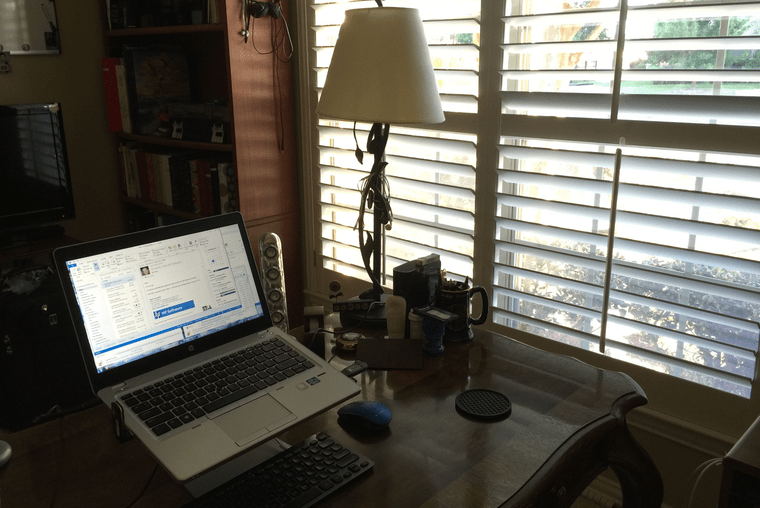FINRA has published Regulatory Notice 24-02 (RN 24-02) announcing the effective dates and other key dates and considerations for its recently adopted Residential Supervisory Location (RSL) and Remote Inspection Pilot Program (Pilot Program) rulemakings. These will be codified as FINRA Rules 3110.19 and 3110.18, respectively.
Together, these rules will offer FINRA member firms additional flexibility in how they structure certain aspects of their supervisory system following the sunsetting of related COVID-19 relief. To that end, FINRA said that the regulatory relief described in Regulatory Notice 20-08, which addressed business continuity planning during the COVID-19 pandemic, will end on May 31.
Firms must opt into the pilot program to participate.
Important dates
Some of the key dates to remember include:
- Sunset of Form U4 and Form BR Relief in RN 20-08: May 31, 2024.
- Effective Date of Rule 3110.19 (RSL): June 1, 2024.
- Sunset of In-Person Inspection Relief in Rule 3110.17: June 30, 2024.
- Effective Date of Rule 3110.18 (Pilot Program): July 1, 2024.
The proposed safeguards and conditions are largely taken from the existing primary residence exclusion offered as part of the branch office definition.
RSLs – key criteria
So, to qualify as a non-branch location, RSLs must fulfil some key criteria, including:
- only one associated person or multiple associated persons who are members of the same immediate family conduct business there;
- the location is not an office;
- no meetings with customers or prospects take place there;
- sales activities remain compliant with other provisions of rule 3110 (including order entry and supervisory procedures);
- no customer funds or securities are handled at the location;
- the associated person is formally assigned to a designated branch office;
- the associated person’s correspondence and communications are supervised by the firm;
- all electronic communications by the associated person are made by way of a member’s electronic system;
- a list of residence locations is maintained by the firm; and
- all books and records are maintained somewhere other than the residential location.
Some criteria would render a location ineligible as a RSL. These include a designation of the firm itself as a restricted or taping firm. They also include instances where one or more of the associated persons at the location:
- is the cause of the firm undergoing a review;
- is a designated supervisor with less than one year of direct supervisory experience at the firm;
- is functioning as a principal for a limited period;
- is subject to a heightened supervisory plan;
- is statutorily disqualified;
- has had a felony charge in the last three years; and
- is subject to an investigation.
Supervisory controls
In light of comment letters submitted by industry participants, the controls around firm supervisory obligations have been strengthened in the final rule.
This is in connection with recordkeeping, where a firm must have a recordkeeping system that captures electronic communications and these records (and any other book and records) cannot be maintained in the residential supervisory location and the firm must have “prompt access to such records.”
Remember there are stringent rules relating to private residences in terms of privacy expectations and protections, under constitutional law (the Fourth Amendment), US statutory law and state laws.
Surveillance tools
Under the surveillance umbrella exists a requirement that each firm “determine that its surveillance and technology tools are appropriate to supervise its RSLs”. The amended rule says the technology baseline for firms includes:
- Firm-wide surveillance tools such as:
- electronic recordkeeping system;
- electronic surveillance of email and correspondence;
- electronic trade-blotters;
- regular activity-based sampling reviews; and
- tools for visual inspection (which has been interpreted as video conferencing technology or portable cameras by the SEC).
- Residential location and activity specific tools.
- Systems tools such as:
- secure network connection; and
- effective cybersecurity protocols.
Ineligibility criteria
The ineligibility criteria have also been strengthened. A firm that has been suspended, or a firm that has been a FINRA member for under 12 months, is not eligible to use the new non-branch location because they pose a “higher risk”.
In FINRA’s view, a new member firm “is often still implementing its business plan and developing a supervisory system appropriate[ly] tailored to the firm’s specific attributes and structure.”
Additionally, a location itself would no longer qualify as a residential supervisory location if “one or more associated persons at such location” is subject to an investigation or regulatory action.
This is interesting: although the other individuals remain eligible, the location itself will presumably no longer qualify as a residential supervisory location. This could be because FINRA is worried about the risk or distractions such investigations and regulatory actions may invite.
New rule can mean material changes in operations
Firms should carefully consider whether the withdrawal of relief and the new Rule 3110.19 might lead to an increase in the number of offices or locations that would constitute a “material change in business operation” or fall outside of the scope of the safe harbor provisions for a business expansion.
An assessment should include consideration of:
- The nature of the proposed expansion;
- The qualifications and experience of the firm’s personnel; and
- The degree to which the firm’s existing financial, operational, supervisory and compliance systems can accommodate the change.
All of these are important of course, but the last is critical given the regulator’s expectations around supervision and surveillances systems and processes.
GRIP View
This rule amendment is reflective of what is already happening in practice when it comes to hybrid working models.
While FINRA suggests that the most notable change is the move away from annual inspections and an alignment of these to the inspection regime that applies to non-branch locations, the bolstering of the conditions and safeguards and tightening of the eligibility criteria represents an attempt to ensure the continuing adequacy of supervision processes at remote locations.
Firms will need to assess their supervisory systems and controls and make enhancements to show they can adequately supervise the activities conducted from these locations – plus have the bandwidth to comply with all of the other regulatory requirements.
To be sure, this should be top of mind right now, given a recent (and widely covered by the news outlets) SEC enforcement case involving insider trading by a man eavesdropping in a residential workspace he shared with his wife.
As the case highlights, there are unique risks associated with hybrid and fully remote working conditions that continuously need attention – from the use of personal devices to how confidential details are discussed to how the location must operate, vis a vis the business’s clients and its data security.
And just how many remote office locations one business should have (from the regulator’s point of view) should be considered; seeking FINRA approval for multiple locations could be a wise idea.
The compliance effective dates this summer loom ahead and it is worth emphasizing that firm’s and compliance teams should take the opportunity to ask FINRA questions when they have them about business operations. This is particularly true when they are unsure of how one person’s status in the office with affect the status of the office itself.
Table of Terms
We have developed this RSL Table of Terms & Conditions to help us keep track of what the new rules entail.
| Branch office | Any location where one or more associated persons of a member firm regularly conducts the business of effecting any transactions in, or inducing or attempting to induce the purchase or sale of, any security, or is held out as such. | Appropriately registered representative or principal | Every three years unless an OSJ or supervisory branch office | |
| OSJ (branch office) | A branch office carrying out the following functions: – order execution; – market making – structuring of public offerings and/or private placements – custody of customers’ fund or securities – approval of new accounts – review and endorsement of customer orders – final approval of retail communications – supervision of activities of persons associated with the member | Appropriately registered principal required | Annual inspection | |
| Supervisory branch office | Any location that is responsible for supervising the activities of persons associated with the member at one or more non-branch locations. | Appropriately registered principal or representative required | Annual inspection | |
| Non-supervisory branch office | Any location that satisfies the branch office definition, but does not qualify as an OSJ or supervisory branch office. | Appropriately registered representative or principal may be required | Every three years (or more frequently if required by nature and volume of business conducted) | |
| Non-branch location (or unregistered office) | Any location that does not qualify as a branch office. | Appropriately registered representative or principal may be required | Every three years | |
| Primary residence exclusion | Primary residence subject to express conditions | Appropriately registered representative or principal may be required | Every three years | |
| Holiday home exclusion | Any location other than a primary residence used for securities business for less than 30 business days in any one calendar year. | Appropriately registered representative or principal may be required | Every three years | |
| Residential supervisory location (RSL) | A residential location with many attributes contained in the primary residence exclusion, but where supervisory functions take place. | Appropriately registered representative or principal may be required | Every three years | |















